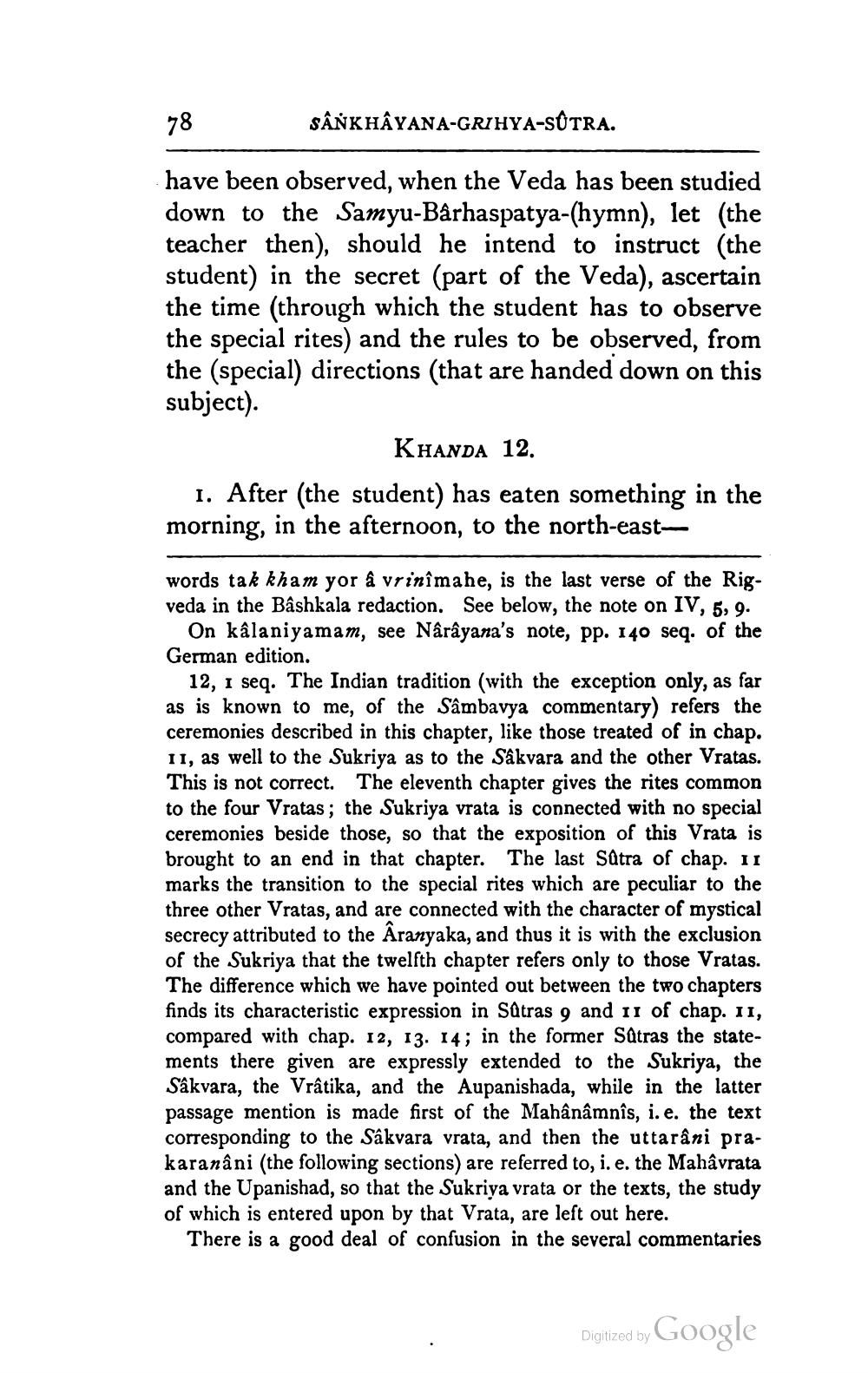________________
SANKHAYANA-GRIHYA-SUTRA.
78
have been observed, when the Veda has been studied down to the Samyu-Bârhaspatya-(hymn), let (the teacher then), should he intend to instruct (the student) in the secret (part of the Veda), ascertain the time (through which the student has to observe the special rites) and the rules to be observed, from the (special) directions (that are handed down on this subject).
KHANDA 12.
1. After (the student) has eaten something in the morning, in the afternoon, to the north-east
words tak kham yor â vrinîmahe, is the last verse of the Rigveda in the Bâshkala redaction. See below, the note on IV, 5, 9.
On kâlaniyamam, see Nârâyana's note, pp. 140 seq. of the German edition.
12, I seq. The Indian tradition (with the exception only, as far as is known to me, of the Sâmbavya commentary) refers the ceremonies described in this chapter, like those treated of in chap. 11, as well to the Sukriya as to the Sâkvara and the other Vratas. This is not correct. The eleventh chapter gives the rites common to the four Vratas; the Sukriya vrata is connected with no special ceremonies beside those, so that the exposition of this Vrata is brought to an end in that chapter. The last Sûtra of chap. II marks the transition to the special rites which are peculiar to the three other Vratas, and are connected with the character of mystical secrecy attributed to the Aranyaka, and thus it is with the exclusion of the Sukriya that the twelfth chapter refers only to those Vratas. The difference which we have pointed out between the two chapters finds its characteristic expression in Sûtras 9 and 11 of chap. II, compared with chap. 12, 13. 14; in the former Sutras the statements there given are expressly extended to the Sukriya, the Sâkvara, the Vrâtika, and the Aupanishada, while in the latter passage mention is made first of the Mahânâmnîs, i. e. the text corresponding to the Sâkvara vrata, and then the uttarâni prakaranâni (the following sections) are referred to, i. e. the Mahâvrata and the Upanishad, so that the Sukriya vrata or the texts, the study of which is entered upon by that Vrata, are left out here.
There is a good deal of confusion in the several commentaries
Digitized by
Google




